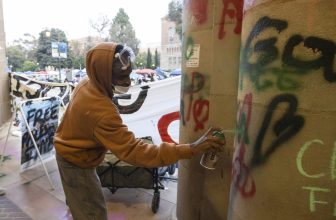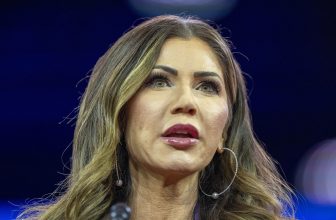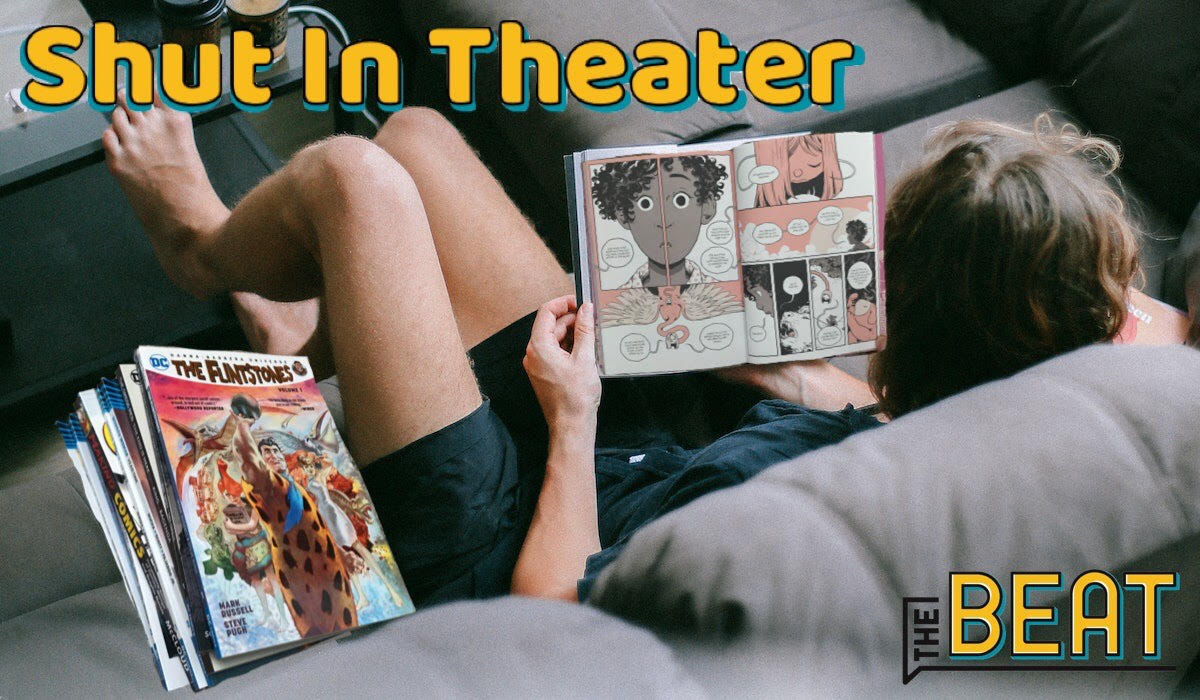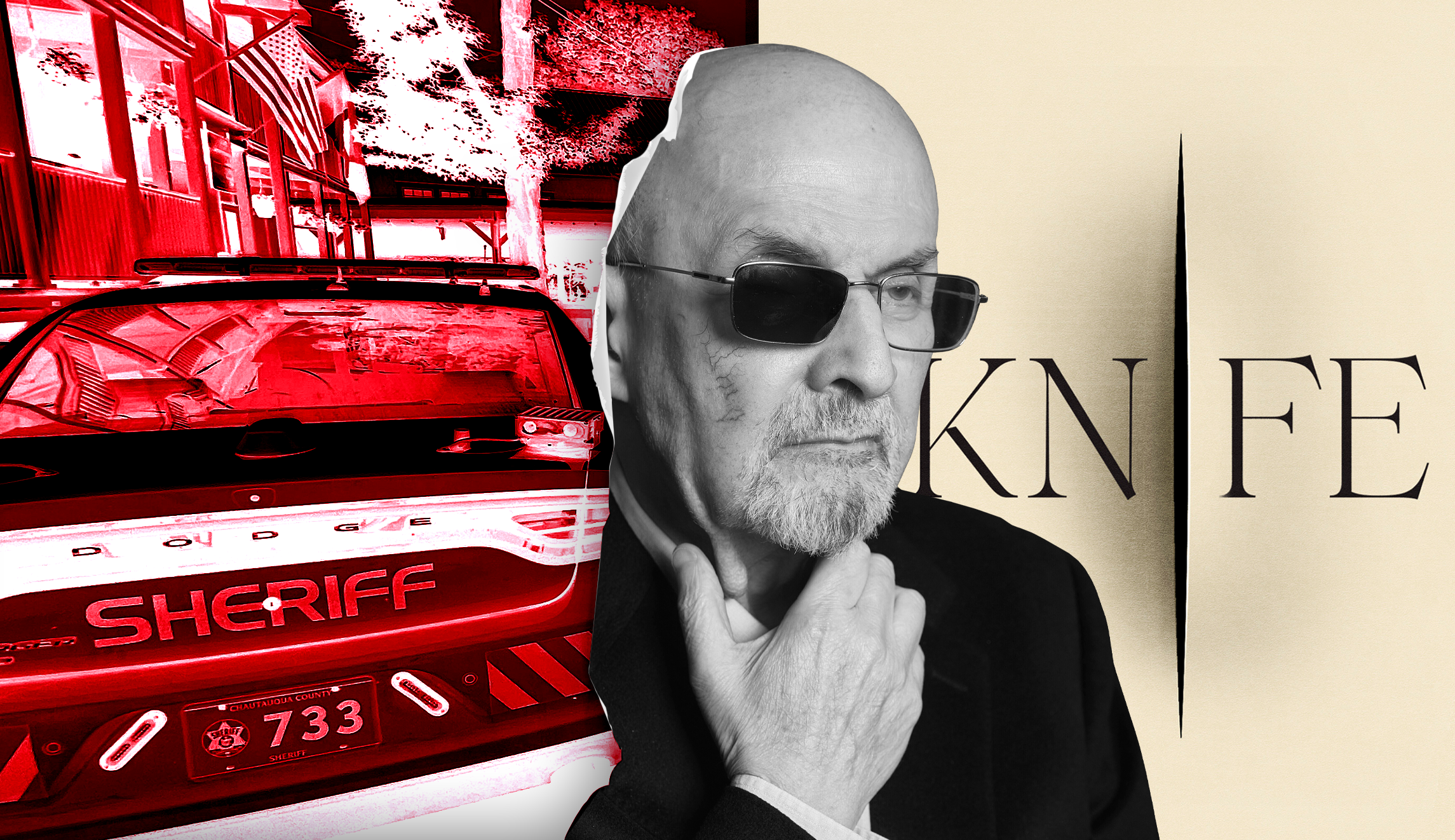
Salman Rushdie’s 2015 novel, Two Years Eight Months and Twenty-Eight Nights, saw the Indian-born British American author take on the role of Scheherazade by spinning numerous fabulous tales and spawning umpteen exotic characters. It was set in New York in an epoch marked by so-called strangenesses where good and evil genies battled, catastrophic disasters raged, and one gardener found himself with the power to levitate. Quichotte (2019), Rushdie’s reinterpretation of Don Quixote, unfolded in “the Age of Anything-Can-Happen”: “A whole nation might jump off a cliff like swarming lemmings. Men who played presidents on TV could become presidents.”
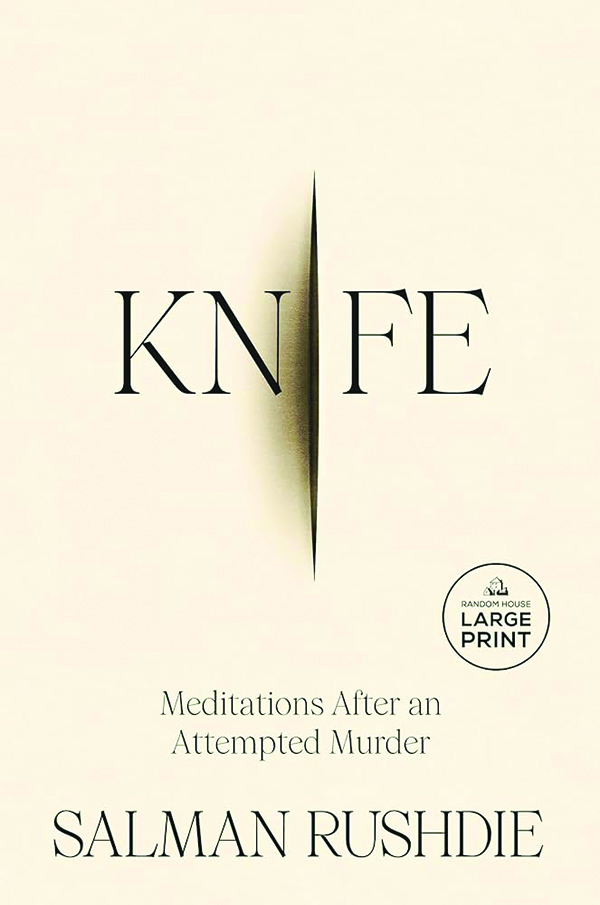
Everything is strange and anything is possible in real life, too. Writers can be brutally attacked by murderous assassins for words they have written in a book. On the morning of Aug. 12, 2022, at the Chautauqua Institution in upstate New York, Rushdie was stabbed multiple times by a stranger. Like an instance of his trademark magical realism, he overcame almost impossible odds and lived to tell his tale. He does so admirably in Knife. It is the second time Rushdie has chronicled a grueling ordeal, and with luck, it will be the last.
That first book was his 2012 memoir, Joseph Anton, about the long years he spent as “an ambassador for himself” in hiding after Iran’s supreme leader, Ayatollah Khomeini, declared his book The Satanic Verses offensive to Islam and issued a fatwa calling for him to be killed. Two of Rushdie’s friends described his subsequent disappearing act in different ways: Martin Amis claimed Rushdie “vanished into the front page,” dominating news headlines; Christopher Hitchens said he “vanished into the netherworld of ultraprotection,” moving from one safe house to another.
Rushdie eventually regained his freedom and made up for lost time by venturing out more in public and leading a seminormal life. But the threat never truly went away: A bounty remained on his head, and following his knighthood in 2007, there were fierce protests from hard-line Islamists and renewed calls for his death. Fifteen years later in Chautauqua, that death sentence was very nearly carried out.
Rushdie says Knife is a book he’d “much rather not have needed to write.” After the attempt on his life, he believed he would never write again. He later realized that only by writing this book could he move on. “To write would be my way of owning what had happened, taking charge of it, making it mine, refusing to be a mere victim,” he declares. “I would answer violence with art.” On this occasion, his art is brave, inspiring, and utterly engrossing.
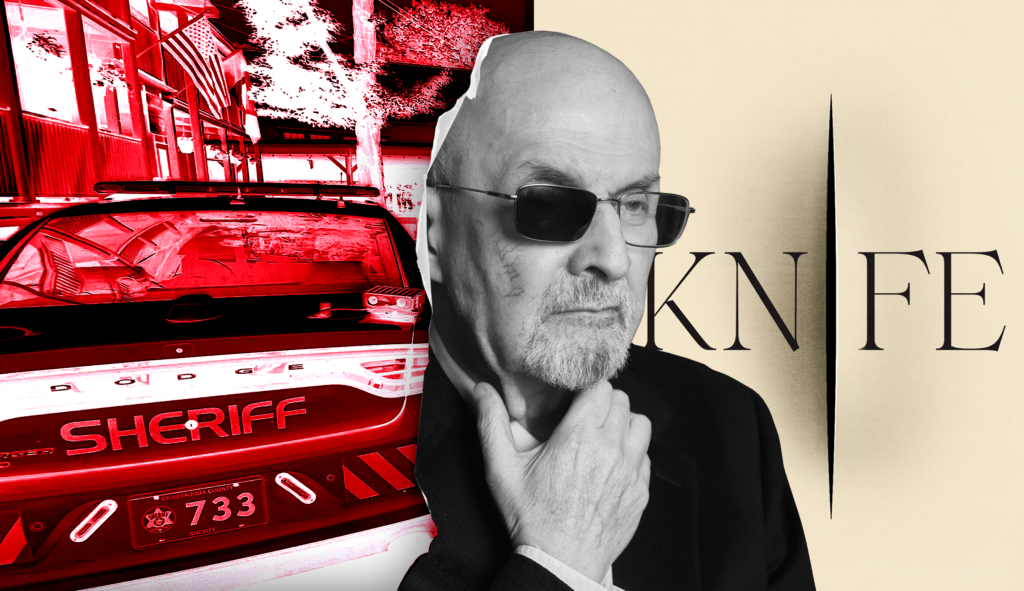
Rushdie begins with the scene of the crime and the day “the world exploded.” He was at the Chautauqua Institution that morning to give a lecture on, ironically, the importance of keeping writers safe from harm. While onstage in the amphitheater, he noticed a figure in black clothes and a black mask running down the aisle toward him. He froze. His first thought was: “So it’s you. Here you are.” His second was: “Why now, after all these years?” This “squat missile” found its target. Over the next 27 seconds, Rushdie was stabbed and slashed in the neck, chest, face, hand, thigh, and — “the cruelest blow” — eye.
Some people in attendance thought they were watching a performance art stunt. When it became clear that what they were observing was real — a real attacker, a real knife, real blood — courageous members of the audience, along with host Henry Reese, leaped up, rushed forward, and pinned down 24-year-old New Jersey resident Hadi Matar.
He is never named in the book. He is “My Assailant, my would-be Assassin,” and “an Ass,” so Rushdie refers to him throughout the book as “the A.” Despite being charged with attempted murder and aggravated assault, the A pleaded not guilty. Equally bizarre, he admitted to reading barely two pages of The Satanic Verses. His trial is due to take place later this year.
Rushdie rightly keeps the A’s page time to a minimum. The book’s focus is not on the perpetrator’s atrocity but on Rushdie’s plight. He was on the point of death when he was airlifted by helicopter across the state line to a trauma center in Pennsylvania. Surgeons operated on him for eight hours. He was kept in the extreme trauma ward for 18 days and held together by splints, staples, and stitches. His right eye couldn’t be saved, but fluid was successfully drained from his lung, his liver regenerated, and with time, he was able to hold a toothbrush and move with a walking frame. His wife, “Eliza,” the poet and novelist Rachel Eliza Griffiths, stayed with him and documented each step of his arduous and indeed miraculous recovery process. For many weeks, she wouldn’t let him look in a mirror, but she did keep him informed of the outpouring of love from friends and family and the declarations of support from fellow writers and heads of state (although India, the country of Rushdie’s birth, “found no words”).
One nurse told Eliza that most patients left the center in body bags. Rushdie left in a wheelchair and with considerable physical and psychological scars. He returned to New York City for rehab and then the comfort and sanctity of his own home but faced challenges on a regular basis: sessions with a urologist, a hand therapist, and a costly dental surgeon; nightly nightmares; a prostate cancer scare. He soldiered on and pulled through and, 13 months after the attack, mustered the strength to revisit Chautauqua to achieve some semblance of closure.
If Joseph Anton was a sprawling, weighty third-person memoir, then Knife is a shorter, leaner set of, according to the subtitle, “Meditations After an Attempted Murder.” Rushdie explains that he had no option but to write “an ‘I’ story” because “when somebody wounds you fifteen times it definitely feels very first-person.” (He grimly adds, “It’s also an ‘eye’ story.”)
Those meditations prove captivating. Rushdie expertly conveys the frenzied chaos and visceral horror of the attack. We might not be able to feel his pain, but we certainly wince as he describes his injuries and medical procedures. He is put on a ventilator and it is “like having an armadillo’s tail pushed down your throat”; his “boiled-egg eye” bulges out of its socket and hangs down his face, “the iris improbably perched on the swollen white at an impossible angle.” A catheter is inserted, his tongue is sewn up, and his eyelid sewn shut.
Elsewhere, Rushdie muses on a range of topics. There are “free association” riffs on knives and on the Nobel Prize-winning writers Naguib Mahfouz and Samuel Beckett, both of whom were victims of stabbings. He replays a dream he had just nights before he flew to Chautauqua in which he was attacked by a spear-wielding gladiator, which in turn prompts him to reflect on similar premonitions or “foreshadowing” in his work — not least in his last novel, Victory City (2023), when his demigoddess heroine is blinded by hot iron rods. Perhaps unsurprisingly, Rushdie also reflects on his mortality: weighing up the thoughts that flashed through his mind (accompanied by a feeling of “profound loneliness”) as he lay in a pool of his own blood and, as an atheist, wrestling with the bandied-around notion that some greater force protected him that day.
Two markedly different chapters stand out. In one, Rushdie charts his relationship with Eliza, beginning with their first encounter when he was so mesmerized by her beauty that he walked into a glass door. “She literally knocked me out,” he notes. The other chapter takes the form of “a conversation that never occurred” between Rushdie and the A. In this imaginary exchange, Rushdie takes his ill-tempered attacker to task over labeling him “disingenuous” and attempts to make sense of his twisted rationale.
The British writer and critic V.S. Pritchett said Rushdie’s masterpiece, Midnight’s Children, was about “the mystery of being born.” In a way, Knife is about being reborn. Rushdie provides a candid, up-close-and-personal account of how he looked death in the face, fought back, and came to embrace what he calls “my second-chance life.” He has written a hugely compelling book. It is just tragic that he had to write it at all.
CLICK HERE TO READ MORE FROM THE WASHINGTON EXAMINER
Malcolm Forbes has written for the Economist, the Wall Street Journal, and the Washington Post. He lives in Edinburgh.


